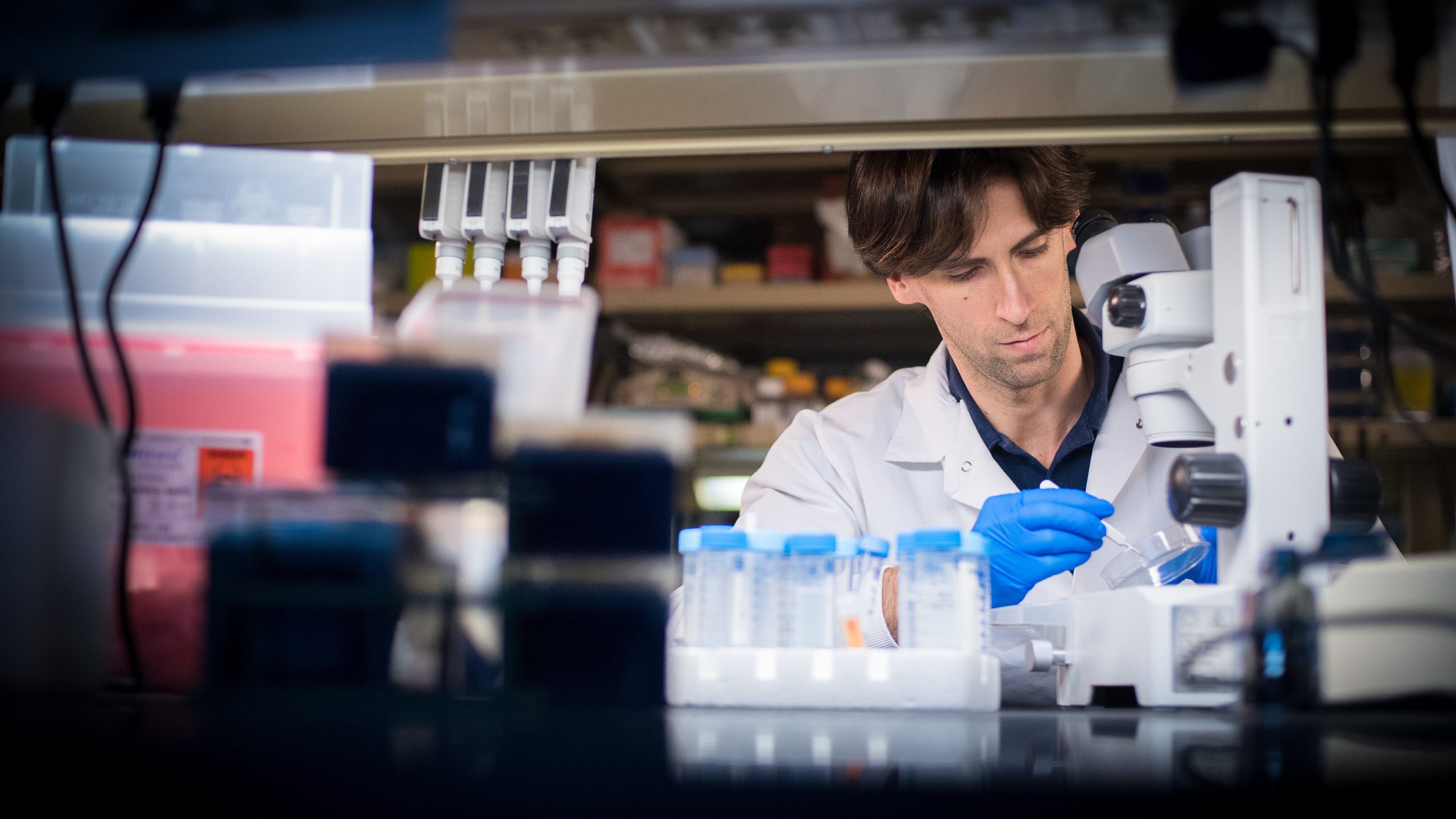A stepping-stone to improving survival from AML
What if we could disrupt the protein turnover machinery in leukaemic stem cells? Could this lead to developing kinder, more targeted treatments for acute myeloid leukaemia (AML)?

AML is the most common type of acute leukaemia in adults. Could targeting the repertoire of proteins in AML lead to improved survival for the most at risk patients? Dr William Grey, Leukaemia UK John Goldman Fellow, makes this the centre of his research.
The challenge
 Each year in the UK around 3100 people are diagnosed with acute myeloid leukaemia (AML). Despite greater understanding of the disease, the main treatments have remained unchanged for decades.
Each year in the UK around 3100 people are diagnosed with acute myeloid leukaemia (AML). Despite greater understanding of the disease, the main treatments have remained unchanged for decades.
The key treatments – chemotherapy and stem cell transplant, often come with harsh side effects and risk of leukaemia coming back. These intensive treatments often aren’t an option for older patients who are most likely to develop the disease.
Leukaemia develops when blood stem cells – the cells responsible for blood cell production – are effectively ‘hijacked’ to produce cancerous cells, known as ‘leukaemic stem cells’. These are often resistant to treatment and ultimately the root cause of poor prognosis in AML.
The science behind the project
Within cells, proteins are constantly being created, broken down and replaced. Dr Grey’s research will investigate the cell machinery that controls this – with a particular interest in a gene called CKS1B – thought to play a key role.
The team have already discovered that by blocking CKS1B (using an ‘inhibitor’), they can target leukaemia but spare healthy cells – a potential gamechanger for future treatment of the disease.
This research takes the findings one step further – testing the CKS1B blocker in combination with other inhibitors, whilst also working to develop new ones. The most promising combinations will go through to the next round of testing, with the aim of ultimately opening avenues for new treatment development.
What difference will this research make?
Dr Grey’s research has the potential to make great strides forward for AML treatment. As well as the possibility of kinder, more targeted treatment options, this research could make vital progress in reducing the chance of AML coming back. The results could be a major stepping stone to improving AML survival.
Support our life-saving research by donating to Leukaemia UK.
